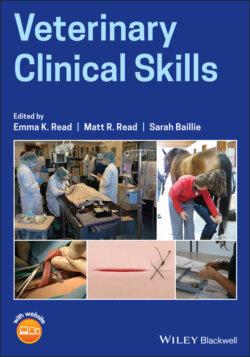Читать книгу Veterinary Clinical Skills - Группа авторов - Страница 28
Spiral (Distributed) versus Block (Intensive) Training
ОглавлениеMost skills programs describe a spiral curriculum, where skills are taught in a stepwise building fashion and become more complex at each iteration, providing reinforcement and integration (Harden, 1999; Malone, 2019). For example, early laboratories may concentrate on basic animal handling skills to ensure students can safely work with the range of species they are likely to encounter later in their training and in the eventual workplace. For clinical skills, initially individual items such as surgical scrubbing and gloving are the focus, while over time these skills are added together to develop procedural competence. In this way, patient preparation, surgeon and assistant scrubbing and gloving, and patient draping can be combined to simulate the initial steps of surgery (Malone, 2019). Furthermore, this progression may include advancing from the use of low‐fidelity models to the use of high‐fidelity models to the use of live animals (Read and Hecker, 2013; Carroll et al., 2016).
Spiral training usually takes place over an extended time frame (e.g. months to years) and is an iterative process, with practice of the basic procedures often preceding addition of new procedures. Taught this way, multicomponent skills can be broken into parts and practiced either sequentially or in random order (Malone, 2019), and this is the most common method currently employed in veterinary education (Read and Hecker, 2013; Carroll et al., 2016).
An alternate model is to teach all the skills required for a procedure in an intensive block of time, as has been described in medical education (Gershuni et al., 2013). This method is often used in postgraduate professional development training due to its time efficiency (Malone, 2019). In one study in medical education, a distributed training program for suturing skills was compared to intensive block training where the distributed program included more practice opportunities and resulted in better skills retention (Gershuni et al., 2013).
